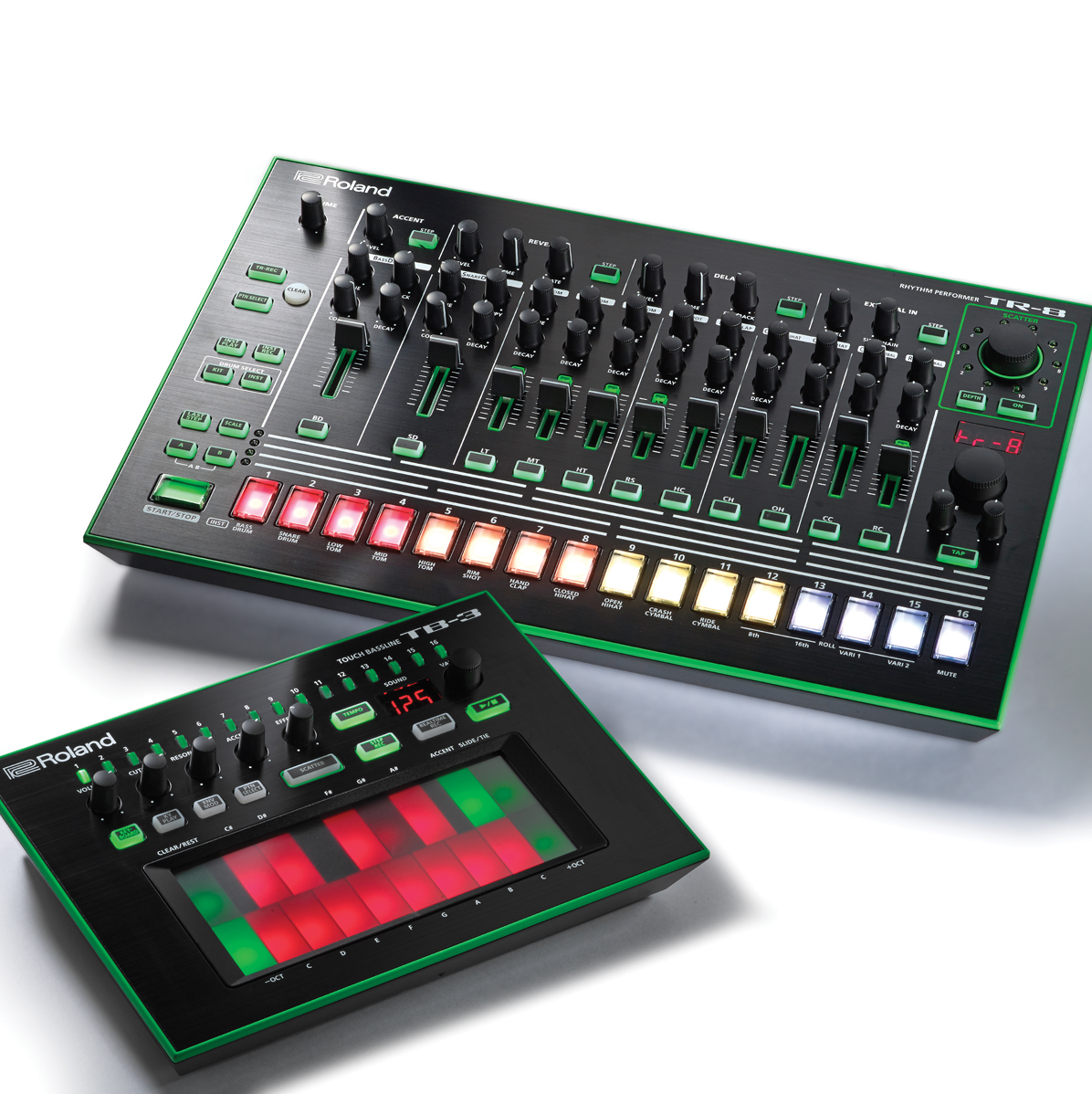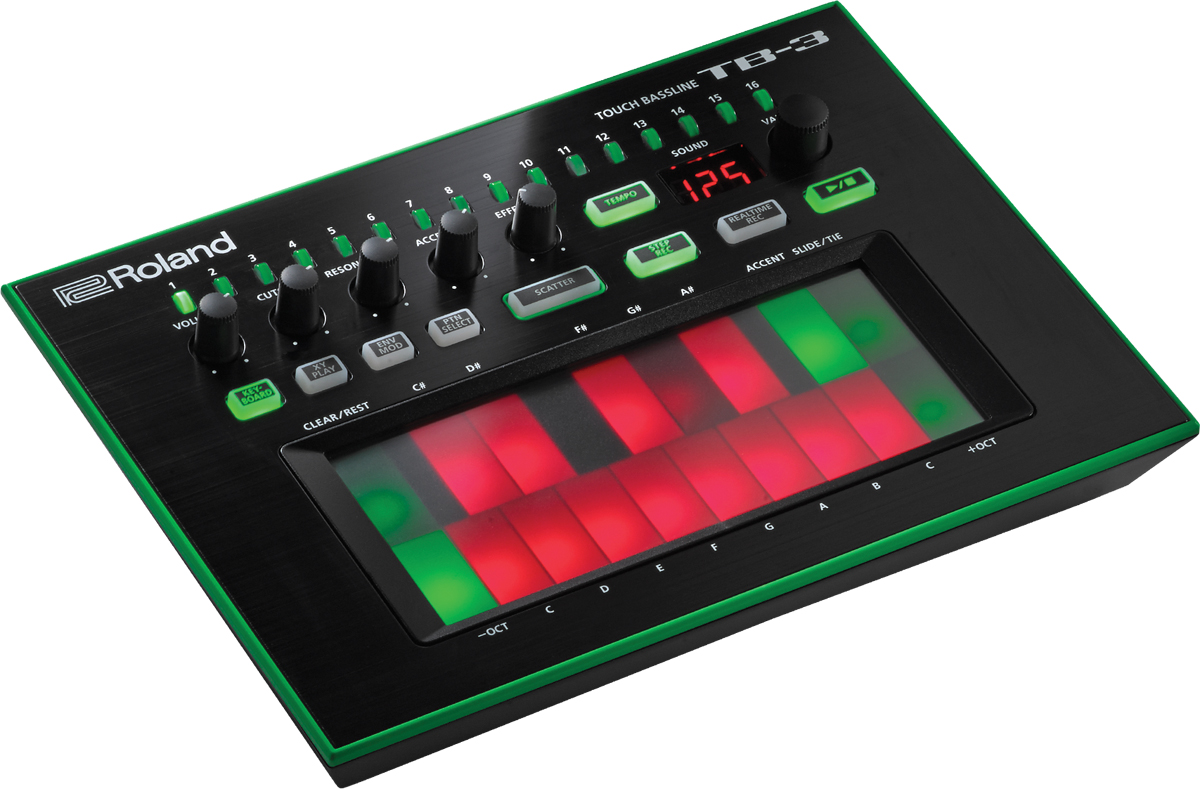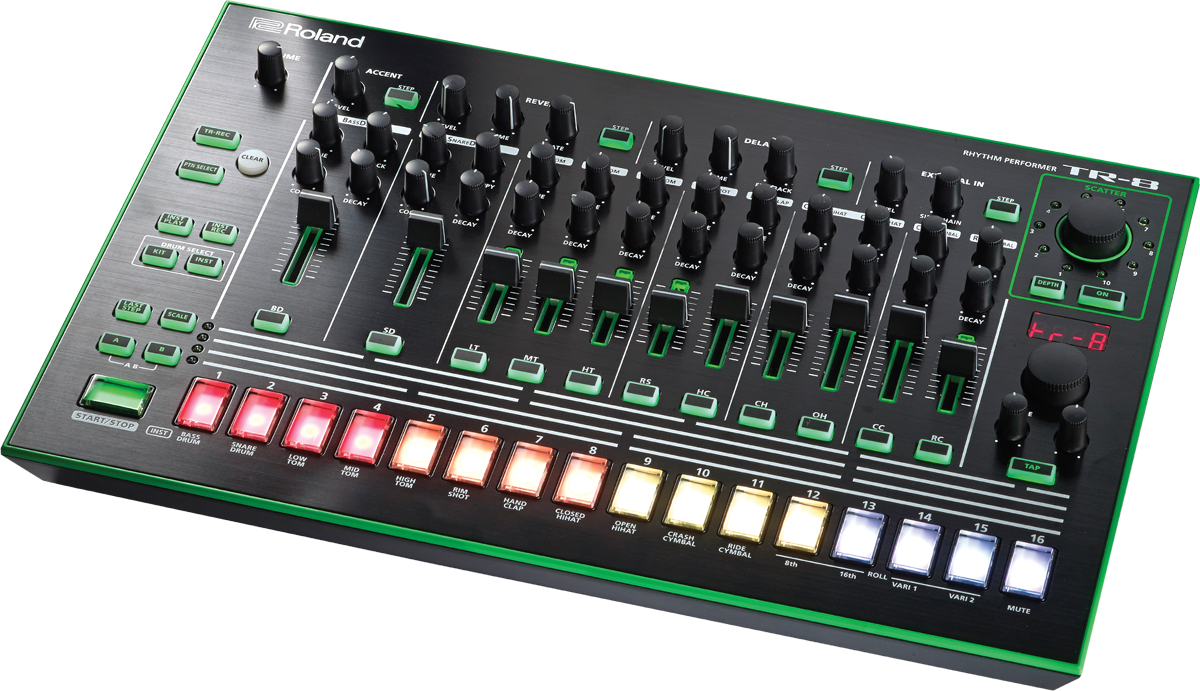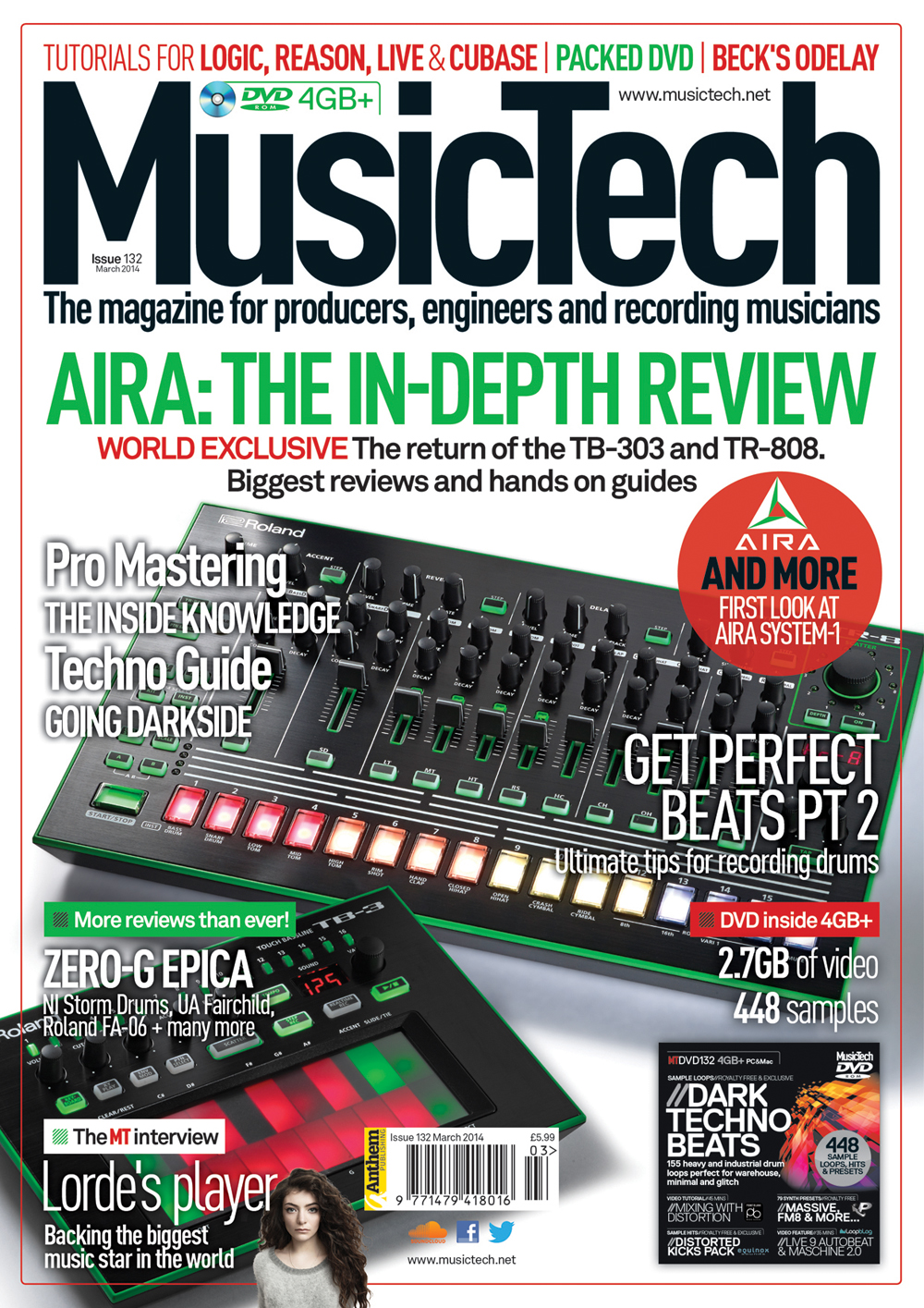Roland Aira TB-3 and TR 8 Reviews – Page 2
Roland Touch Bassline TB-3 – Overview Yep that’s its full name but we’ll stick with TB-3. It’s a pattern bassline generator and instrument in its own right, if you simply choose to play back its on board sounds (20 x 303-type, 51 bass sounds, 40 leads and 17 effects) using the red touch screen […]

Roland Touch Bassline TB-3 – Overview

Yep that’s its full name but we’ll stick with TB-3. It’s a pattern bassline generator and instrument in its own right, if you simply choose to play back its on board sounds (20 x 303-type, 51 bass sounds, 40 leads and 17 effects) using the red touch screen keyboard. There are two audio outs, MIDI In and Out, headphones and USB MIDI and audio – very nice. There are also filter, resonance, accent and effect real-time rotaries to control those parameters of the sound within your chosen pattern.
The touch screen is a striking feature and important in many ways. It contains red keys which play and record notes and patterns, plus green keys which act as function buttons, so they may shift the notes up and down an octave or allow you to delete recorded notes. In Pattern Mode where you can play one of 64 patterns, they take you up and down the eight banks of eight patterns.
There are two main recording modes. The first is Step Mode where you program notes in by keying them in over a pattern of 16 or 32 steps. The step you are on is lit in green and as soon as you play the note it moves to the next. You can skip notes, add accent, note slide, and change octaves using the five green keys. The second mode is Realtime where the pattern cycles and you can record your playing in, you guessed it, real time. My preference was definitely the former…

The TB-3 is angled perfectly for desktop use.
Performance Modes
XY Play mode has a couple of parameters assigned to left, right, top bottom movements, usually volume and pitch, so you can suddenly mute parts of a pattern for dramatic tension. I found more action in Envelope Mode though. Use this if you tire of the filter and resonance as your movements here will change parameters like envelope modulation or decay. On the 303 sounds, in particular, this lets you add more grit and punch.
Finally Scatter Mode. This has eight stutter type effects that each have ten levels of effect. The first couple essentially repeat chunks of your pattern in ever decreasing note lengths, halving each time until you get a buzzing sound. Others introduce pitch and reverse effects. Some are easier to incorporate than others but all are great for adding sudden impact and attitude. As you go further up the scale the real-time effects do lag, but Scatter is a highlight of the unit.
The Roland Rhythm Performer TR-8 – Overview
The TR-8 should have a ‘9’ in there as well as it also does a very good 909 impression on top of its 808. But then, like the TB-3, this machine does more than its classic counterpart. The unit has the same connections as the TB-3 round the back with the additions of two more audio outs and two audio ins. Original TR-808 fans will be disappointed as that unit had more outs than an England Ashes series…

The latter two inputs on the TR-8 are important. Plug the TB-3’s audio outs into the TR-8 and you get to then apply its effects like Scatter to the TB-3, plus you can sidechain it, ducking it under the kick if you like.
The TR-8 can play kits with 11 sounds, each of which can be tuned and have its decay adjusted. The kick and snare also each have comp dials for extra oomph and the kick also has an attack dial and the snare a Snappy dial (as on the original 808) which turns a tapping snare at its low end into the rasping, whooshy familiar snare you know and love.
Across the top we have an Accent dial accompanied by a Step button. Press that followed by any of the 16 step keys at the bottom of the unit to accent (emphasise) the sound(s) played on that step. Similarly moving across you can add a touch of reverb or delay to whichever part of the pattern you choose.
Scatter Time
As with the TB-3 we get Scatter on the TR-8. This time a physical dial is used to go through 10 effects, and the Depth of Scatter is controlled by this dial too. As long as you don’t have terrible timing you can get some great jittery effects going, bringing the whole thing back right on beat. And if you have the two linked you can Scatter on the TB-3 and then Scatter that Scatter with the TR-8! My only real worry is that the Scatter effects could date quickly.
Programming the TR-8 is even easier than the TB-3. Just select TR-Rec, choose your instrument, and illuminate the part you want it to play on as it passes. Inst-Rec mode offers a real time version for recording while Inst Play lets you play along with existing patterns. Last Step allows you to define the pattern length, again useful as a live effect as you can quickly make it just one for a while and take it up to 16. Scale (also on the original) adjusts the pattern by changing the number of steps per beat. Elsewhere you can select different drum kits (16 to choose from) and with Inst, check out the options of different instruments per kit.
Next Page – TB-3 and TR-8 audio examples
Previous Page – TB-3 and TR-8 Intro
Final Page – TB-3 and TR-8 Final Thoughts and Verdicts
There’s a massive, more in-depth review of Aira plus hands-on tutorials and a first look at Aira System-1 (the third in the Aira range) in MusicTech magazine on sale 20th February
